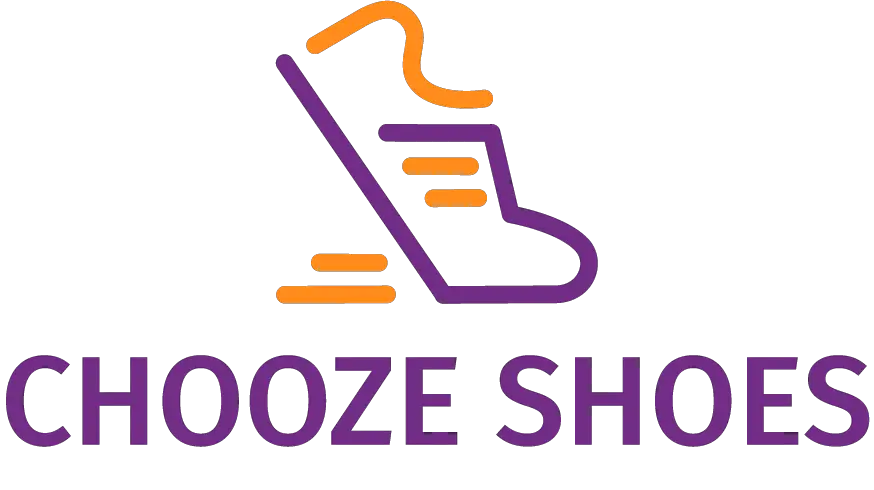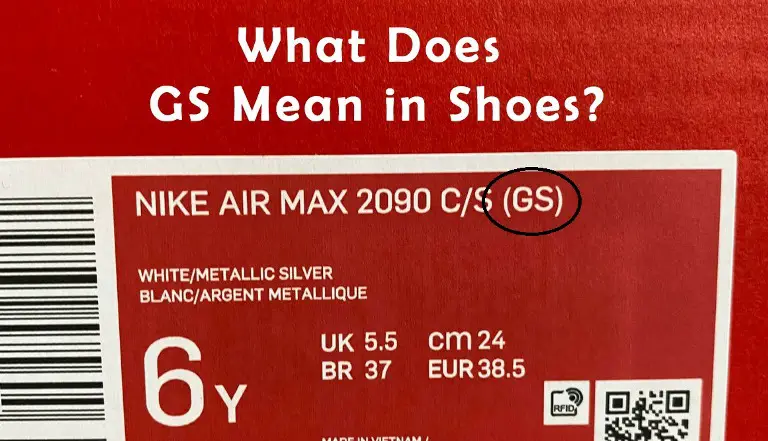Blog
What Does GS Mean In Shoes? (With GS Size Chart)
What does GS mean in shoes?
If you are searching for a great pair of shoes for your little one, you will notice how the GS tag has made a powerful strike on the market.
What size and what terminology does it refer to? All the information is coming for you!
Contents
What Does GS Mean In Shoes?
The GS acronym originally comes from the Air Jordan line of Nike and refers to “Grade School”. It means all shoes tagged with “GS” belong to the sizes of a child going to a grade school.
GS doesn’t indicate any specific size but a separate size chart for children’s shoes.
For example, you might wear size 6 with adult shoes, though it would be impossible for you to fit in size 6 at GS standards.
With the specifications of GS shoes, finding suitable footwear for your children has never been easier.
Not only are these shoes of the largest sizes among footwear for kids, but they also have the highest quality.
The soles are often packed with padding so the child will feel comfortable throughout the day. The materials have superb endurance as well, for children of this age are very active and eager to explore.
Check more: What Does SE Mean In Shoes?
GS Shoe Size Chart
| US | UK | EUR | CM | INCHES |
| 3.5Y | 3 | 35.5 | 22.5 | 8.9 |
| 4Y | 3.5 | 36 | 23 | 9.1 |
| 4.5Y | 4 | 36.5 | 23.5 | 9.3 |
| 5Y | 4.5 | 37.5 | 23.5 | 9.3 |
| 5.5Y | 5 | 38 | 24 | 9.4 |
| 6Y | 5.5 | 38.5 | 24 | 9.4 |
| 6.5Y | 6 | 39 | 24.5 | 9.6 |
| 7Y | 6.5 | 40 | 25 | 9.8 |
Other Shoe Acronyms For Sizing
Besides GS, we have various acronyms indicating different age ranges in shoes. If you are aware of them, you will have a much easier shopping time.
- Y (Youth or Years): Both of them are used in shoes for children. ‘Youth’ is a product range for a group of children at a certain age, while ‘Years’ comes with a specific age.
- K (Kid): It means the shoes are meant for a kid. It is not a popular acronym but it still does the job.
- TD (Toddlers): It is the acronym for toddlers. TD shoe sizes are not included in GS sizes.
- GG (Girl Gradeschool): You can say it is part of the GS category, targeting girls only.
- BG (Boy Gradeschool): The boy-only version of GG.
- N (Narrow): The shoes are particularly for narrow feet. People who need these shoes usually don’t feel comfortable in regular footwear since it is too big for them.
- M (Medium): It indicates shoes with a medium fit. You can say it is your conventional size.
- W (Wide): The shoes are for extremely wide feet only. People who wear these shoes might end up having serious foot problems if they must use normal footwear.
- HC (Hard Court): It refers to shoes designed for hard and possibly abrasive surfaces, so they are made of durable materials.
Who Wears GS Shoes?
In response to the question “What does GS mean for sneakers”, we have agreed that these shoes are for Grade School students, though their designs are not too different from adult footwear.
Therefore, grownups with small feet can still use GS shoes with no problems.
If you go this way, you might save a significant fee because GS models are much less expensive than the adult versions.
However, don’t commit to overly tight shoes because they can cause severe conditions to your feet.
What Brands Offer GS Size?
Some well-known brands offer GS sizes:
Nike
Their GS shoes range from 3.5Y – 7Y by US standards, and the UK sizes are not too different.
Nike is mostly appreciated for ventilation from their materials and shock absorption.
ASICS
The GS chart of ASICS covers a wider range, from 1 to 7 in US sizes. So, kids with larger sizes can still get something fitting for themselves.
Jordan
They share the same size range as Nike.
Their signature is the rubber outsoles with double sections for smoothness and lightness. Kids are also in love with Jordans due to the color-changing logo.
How To Find The Best Shoes For Your Children?
Measure their feet
The most ideal method would always be visiting a store and trying the shoes on in person.
However, you might not have the time and you will need to measure the shoe size at home.
What you need: paper, ruler, pen, and a straight, flat wall.
- Let the kid stand against the wall and be sure the heels are flush against it.
- Put the ruler between the feet and measure the length from the heel to the longest toe.
- Note the measurement down on the paper.
Here are some tips for you to get the most accurate number:
- Measure in the afternoon or the evening because the feet are likely to swell up after an active day and increase the size.
- Measure with their usual socks on.
- If you somehow have to measure in the morning, use thicker socks for them.
- Refer to the GS size chart for a suitable size.
Check the fit
If your baby is good at expressing themselves, this step will be much simpler.
However, it’s better to do some checking on your own and see whether it matches the baby’s description or not.
- Length
Press the toe box with your fingers and check if it squishes your child’s toes. There should always be half an inch of a gap so the little feet can grow in the next few months.
- Width
When your baby has the shoes on, use both your hands to feel the sides of their feet and make sure there are no bulges or pressure.
Like the feet, the shoes also have their widest section, and they should fit perfectly.
- Depth
Run your finger across the top of the shoe. If the fabrics don’t move a tad, the footwear might be too tight for your baby.
However, should you be able to easily pinch the fabrics, you will need something smaller!
- Ankle
The shoe should brush against the ankle unless it has some padding, or the ankle bone will suffer some serious pain.
- Heel
Ask the baby to sit down and hold one foot up. Hold the ankle in one hand and the heel in the other hand. Tug at the heel slightly and ensure it doesn’t slip off too easily.
- Walking
If the shoes check all the boxes, it’s time to try walking around and double-check for no slipping or gapping.
Your kid’s posture needs to be natural too!
FAQs
1. How often should we replace shoes for kids?
Unlike with adult footwear, we must be ready to get new shoes for kids after a period as short as a few months. There are two main reasons:
- The kid has outgrown the shoes;
- The shoes have been used too often and started to wear out.
For toddlers
With babies of this age, you should be prepared to change their shoes very regularly. After two or three months, their feet might already grow half a size larger.
Wearing overly tight shoes is never a good choice, especially for children. So, you will have to replace them even if they are still in prime condition.
Since they grow up so quickly, we consider seasonal shoes a suitable and economical option for them. Nonetheless, the materials and the sizes of these temporary shoes have to be decent as well.
Most brands will have a shoe size chart for toddlers from 1 – 3 years old, which you can refer to after getting the correct measurement of the baby’s feet!
For preschoolers
Kids of this age grow a tad slower than toddlers, though they have become more curious and eager to explore the world outside.
As a result, they will start engaging in more activities, hence their shoes will be worn out in no time.
The duration to change their shoes should be a little longer now, approximately 6 months.
If they still grow up too fast, it is not a problem! Your priority in this era should be shoes with more durable materials.
For grade-schoolers
They are the most grown group if we are talking about kids, thus the growth rate is likely to be slower than the first two groups.
However, they are also more active than younger children, subsequently damaging the shoes much faster.
In this stage, you would need to get them new shoes at least once a year because health issues can occur if the shoes don’t fit them well. Aside from sizes and fabrics, comfort is also a concern now.
By now, your kid(s) should be able to express their discomfort if the shoes are squeezing or not hugging their feet properly.
So, you can ask them about how they feel and find a way to adjust.
2. Do All Shoe Brands Have GS Sizes?
Not all brands have a GS section for their shoes.
When their priority is not kid customers, they won’t produce shoes for children. Then you won’t find any trace of GS shoes on their official websites.
3. Are GS Men’s and Women’s Shoes Size The Same?
Yes, because the difference between men’s and women’s feet are almost nonexistent in the early stage of life. The GG and BG tags mentioned above often refer to the patterns and colors that baby girls and boys tend to go for.
Final Words
Knowing what GS means in shoes might open up a whole new section of footwear.
As long as you measure their feet right and check the fit properly, there won’t be any difficulty in finding a comfortable and beautiful gift for your beloved ones.
If you are an adult with small feet, you can also rely on GS shoes for an economical alternative.

